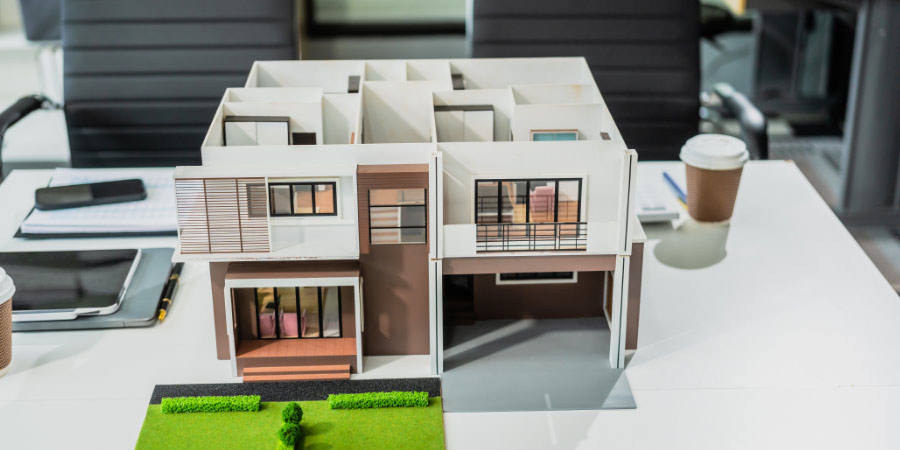
After completing over 150 townhouse projects across Austin, Melbourne, Sydney, and Denver, we’ve seen every challenge these compact urban homes can throw at you. The inflexible lots, the noise complaints, the zoning headaches, the parking nightmares, we’ve solved them all, often multiple times.
Here’s what we’ve learned, and more importantly, how we handle these challenges so our clients can focus on what they do best: growing their business.
Challenge #1: Making 18-Foot Lots Feel Spacious
Last year, a developer in Sydney handed us five townhouse lots that were barely 18 feet wide. “Make them feel like homes, not hallways,” was the brief. We’d heard this before.
Our solution? We’ve developed a systematic approach to narrow-lot planning that we now apply to every similar project. Open-plan living spaces flow seamlessly into each other. We strategically position light wells to draw natural light deep into the plan. Every stairwell doubles as storage. Kitchen islands become room dividers.
The result? Homes that feel 30% larger than their actual square footage. We’ve refined this approach across dozens of projects, so when you come to us with a narrow lot, we already know what works.
Challenge #2: Party Walls That Don’t Party-Crash Your Peace
Shared walls are where most firms stumble. Sound transmission, fire codes, structural loads—get any of these wrong and you’ll hear about it from angry homeowners or code officials.
We’ve standardized our party wall assemblies based on real performance data from completed projects. Staggered stud construction with resilient channels for acoustics. Fire-rated assemblies that exceed code without eating up interior space. Load paths that work independently for each unit.
One Denver project taught us everything we needed to know about acoustic issues when the client received noise complaints before move-in. We redesigned the wall assembly, solved the problem, and now apply those lessons to every project. You won’t face that learning curve.
Challenge #3: Getting Light Where It Doesn’t Want to Go
Long, narrow homes love to create dark middle spaces. We’ve tried every trick in the book—and some we invented ourselves.
Strategic light wells now appear in our plans almost automatically. We know exactly where to place clerestory windows for maximum impact. Our cross-ventilation strategies work because we’ve tested them in real buildings, not just on paper.
A Melbourne project had units that were 60 feet deep with only front and rear access to light. Six months after completion, residents told us these felt like the brightest homes they’d ever lived in. That’s what experience gets you.
Challenge #4: Parking That Doesn’t Kill Street Life
Municipal parking requirements versus community design guidelines—we’ve fought this battle in every city where we work. The solutions aren’t obvious, but they are learnable.
Rear-loaded garages through alleys. Tandem parking that actually works. Ground floor configurations that provide required parking while maintaining active street frontage. We’ve done the trial and error, so you don’t have to.
That Denver project? We delivered one enclosed garage per unit while creating a street frontage that the city planning department used as an example for other developers. It’s become our template for similar situations.
Challenge #5: Zoning Codes That Change Every 20 Miles
Every municipality writes its own rules. Setbacks, height limits, green space ratios, window placement restrictions—what passes in Austin fails in Dallas.
Here’s what other firms don’t tell you: we maintain an active database of zoning requirements for every primary market we serve. When your project hits our desk, we already know the local rules. More importantly, we know which planning departments are strict about enforcement and which ones are flexible during plan review.
We’ve gotten projects approved in Toronto that other firms said were impossible. It’s not magic—it’s just knowing the system.
Challenge #6: MEP Systems in Impossible Spaces
Plumbing, electrical, HVAC, and fire systems still need to fit, even when there’s no space for them. Route them wrong and you’ll have acoustic problems, maintenance access issues, or ceiling height conflicts.
Our MEP coordination isn’t theoretical. We model everything in BIM, run clash detection, and verify constructability before you see the first drawing. Why? Because we’ve been called in to fix projects where someone else didn’t do this work properly.
The contractor on that Sydney project told us it was the cleanest set of coordination drawings he’d worked with in 15 years. That’s the standard we deliver on every project now.
Challenge #7: Repetition That Doesn’t Look Repetitive
Developers want efficiency. Buyers want character. City design review boards want visual interest. Satisfying all three takes experience.
We’ve developed a palette of façade variations that create individuality without increasing construction complexity. Material changes, roofline variations, alternating balcony designs—we know precisely which changes add visual interest and which ones add cost.
Our standard approach now includes three to five façade variations per project. Planning departments approve them faster, buyers respond better, and contractors don’t complain about complexity.
Challenge #8: Sustainability That Actually Works
Energy codes keep getting stricter, but sustainable design in townhouses isn’t just about meeting minimums. It’s about solutions that work in narrow, attached buildings.
We’ve optimized passive solar strategies for party wall conditions. Our standard roof designs maximize solar panel efficiency even on narrow lots. We detail thermal bridges at shared walls because we’ve seen what happens when you don’t.
A recent project in Melbourne achieved a 6-star energy rating using strategies we’ve refined over multiple projects. The developer saved on marketing costs because energy performance became a selling point.
Why This Matters for You
Every challenge we’ve described, we’ve solved multiple times. The solutions are documented, standardized, and ready to apply to your next project.
When you work with Uppteam, you’re not paying us to learn on your project. You’re accessing solutions we’ve already proven in real buildings with real residents.
Our clients don’t attend weekly coordination meetings. They don’t review endless design iterations. They don’t troubleshoot zoning conflicts or chase down MEP consultants.
They give us the program and the site. We deliver coordinated construction documents that contractors can build and that planning departments approve.
The Bottom Line
Townhouse design is complex, but it’s not mysterious. The challenges are predictable, and the solutions are learnable. We’ve done the learning.
Your next townhouse project can benefit from every lesson we’ve learned from the previous 150. No trial and error. No expensive mistakes. No delays while your team figures out problems we solved years ago. That’s what 150 projects of experience get you. And it’s what you get when you work with us.


















